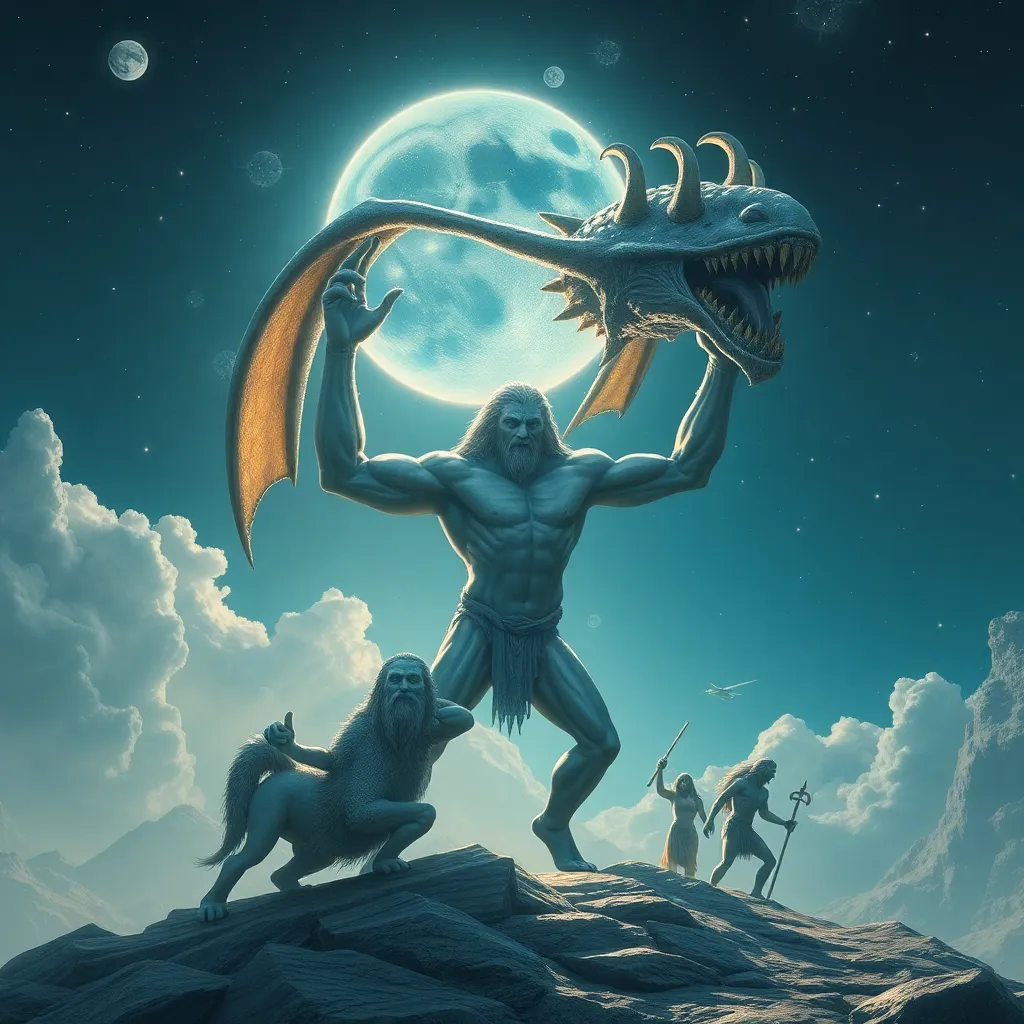Cyclops and Their Relationship with Other Mythical Creatures
I. Introduction
Cyclopes are among the most fascinating beings in Greek mythology, often depicted as monstrous one-eyed giants. They have captivated the imagination of countless generations and are integral to many mythological narratives. Understanding their relationships with other mythical creatures provides insight into their role in the ancient world and the broader tapestry of mythology.
II. Origins of Cyclops in Mythology
The origins of Cyclopes can be traced back to ancient Greek literature. They are mentioned in various texts, with significant references found in Homer’s “Odyssey” and Hesiod’s “Theogony.” The Hesiodic Cyclopes, known for their massive stature and single eye, are often depicted as the sons of Uranus (Sky) and Gaia (Earth).
Notable figures include:
- Polyphemus: Perhaps the most famous Cyclops, Polyphemus is known for his encounter with Odysseus, where his brutality and eventual defeat embody the conflict between civilization and barbarism.
- The Hesiodic Cyclopes: These Cyclopes are portrayed as craftsmen who forged Zeus’ thunderbolts, showcasing their importance in the divine hierarchy.
III. Cyclops Characteristics and Abilities
Cyclopes are characterized by their immense size and distinctive single eye, which is often depicted in the center of their foreheads. They possess incredible strength and are skilled craftsmen, particularly in metalwork and forging. Their abilities include:
- Unmatched physical strength
- Expertise in metallurgy and craftsmanship
- Ability to create powerful weapons, such as Zeus’ thunderbolts
Culturally, Cyclopes symbolize wildness and the untamed aspects of nature, often representing the chaotic forces that heroes must overcome in their quests.
IV. Cyclops and Other Giants
In exploring the relationships Cyclopes have with other giants in mythology, it’s essential to compare them to figures like the Titans and the Giants of Norse mythology.
Shared traits among these beings include:
- Immense size and strength
- Connections to the Earth and natural elements
- Frequent conflicts with gods and heroes, often representing chaos against order
While Titans, such as Cronus, embody the primordial aspects of creation, Cyclopes often represent a more localized chaos that challenges specific heroes, particularly in Greek mythology.
V. Interactions with Gods and Heroes
Cyclopes play a significant role in the interactions between gods and heroes. One of the most notable encounters is that between Odysseus and Polyphemus:
- In the “Odyssey,” Odysseus blinds Polyphemus to escape from his cave, demonstrating the triumph of intellect over brute strength.
- This encounter highlights themes of cunning, survival, and the consequences of pride.
Cyclopes are also recognized for their craftsmanship, particularly in the mythology of gods. They forged Zeus’ thunderbolts, illustrating their importance in the divine realm and their relationship with the Olympian gods.
VI. Cyclops in Popular Culture
In modern times, Cyclopes have been portrayed in various forms of literature, film, and art. These interpretations often take creative liberties, presenting Cyclopes as misunderstood creatures or as comedic figures. Some notable examples include:
- In movies like “The Clash of the Titans,” Cyclopes are depicted as formidable yet noble beings.
- In children’s literature, Cyclopes are often represented in a more whimsical light, emphasizing their singular eye as a unique trait.
These modern depictions often diverge from the more fearsome portrayals found in ancient texts, showcasing the evolution of the Cyclops myth in contemporary culture.
VII. Cyclops and Other Mythical Creatures
Cyclopes also interact with a variety of other mythical creatures, including centaurs, fauns, and dragons. These relationships can be complex and often reflect thematic connections and conflicts:
- Centaurs: Both Cyclopes and centaurs represent a blend of human and animalistic traits, often embodying the struggle between civilization and savagery.
- Fauns: Fauns, like Cyclopes, are part of the wilderness and often interact with gods and mortals, representing nature’s duality.
- Dragons: The conflicts between Cyclopes and dragons often symbolize the battle between chaos and order, with heroes frequently facing both adversaries.
These relationships enrich the narratives in which Cyclopes appear, weaving them into the larger mythological framework.
VIII. Conclusion
The Cyclopes hold a significant place in the mythological landscape, representing the intersection of chaos and craftsmanship. Their relationships with other mythical creatures, gods, and heroes highlight their complexity and enduring legacy. As both fearsome giants and skilled artisans, Cyclopes continue to capture the imagination, reinforcing their importance in both ancient mythology and modern interpretations.




